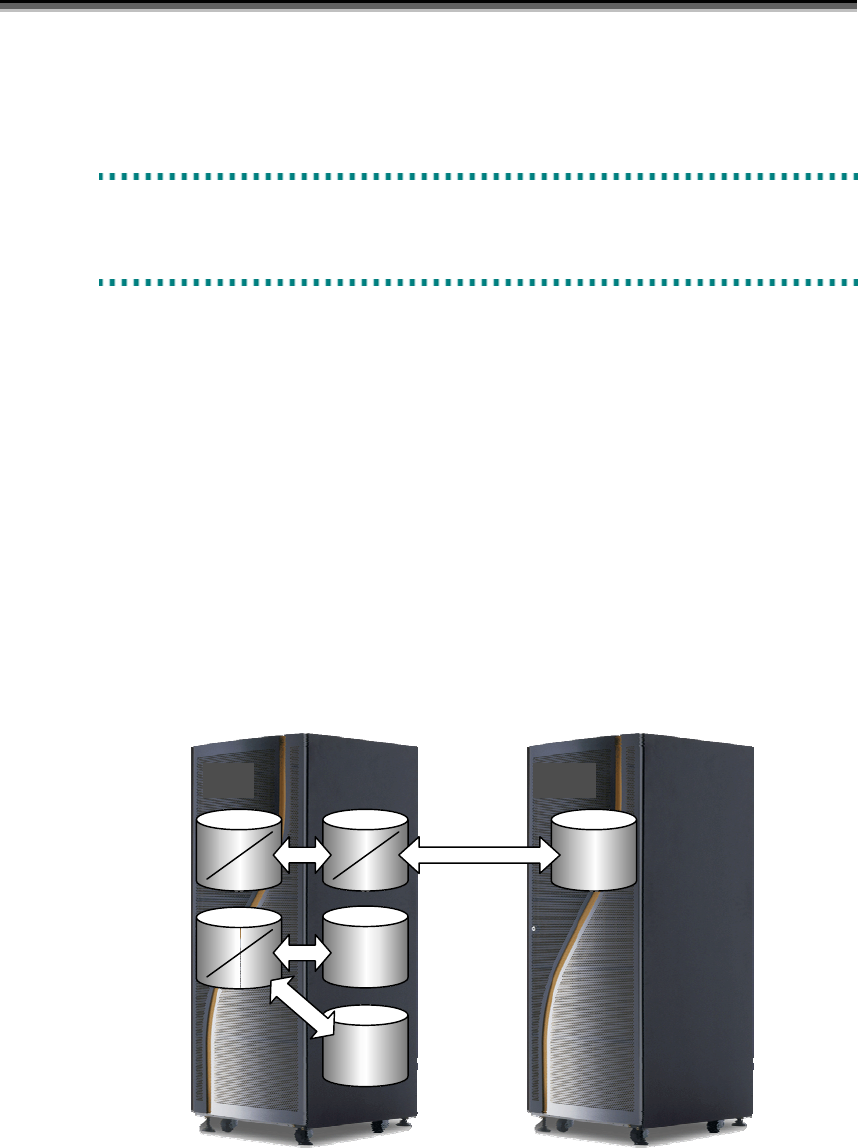
Chapter 3 Replication Management
43
3
3
3
.
.
.
3
3
3
V
V
V
a
a
a
r
r
r
i
i
i
o
o
o
u
u
u
s
s
s
O
O
O
p
p
p
e
e
e
r
r
r
a
a
a
t
t
t
i
i
i
o
o
o
n
n
n
s
s
s
o
o
o
f
f
f
R
R
R
e
e
e
p
p
p
l
l
l
i
i
i
c
c
c
a
a
a
t
t
t
i
i
i
o
o
o
n
n
n
M
M
M
a
a
a
n
n
n
a
a
a
g
g
g
e
e
e
m
m
m
e
e
e
n
n
n
t
t
t
3
3
3
.
.
.
3
3
3
.
.
.
1
1
1
P
P
P
a
a
a
i
i
i
r
r
r
S
S
S
e
e
e
t
t
t
t
t
t
i
i
i
n
n
n
g
g
g
/
/
/
U
U
U
n
n
n
p
p
p
a
a
a
i
i
i
r
r
r
To perform replication operations, you must set pairs beforehand.
To set a pair, set the original volume as MV and the target volume as RV. You can also use the
volume you have set as RV in another pair by setting it as MV.
You can set pairs freely within the following bounds.
• You can set up to three volumes of RVs (dRVs) or up to four volumes of RVs (including rRV) for
one MV at the same time.
• You can set RVs in up to 2 disk arrays for one PV.
• You can set DynamicDataReplication only for one layer in the disk array.
• You can set a pair only when the two volumes have the same capacity.
Figure 3-7 shows an example of the pair setting.
Figure 3-7 Example of Pair Setting
You may want to specify multiple pairs simultaneously, for example, when you initially build or rebuild
a replication environment. To specify pair environments at a time, use “Replication Setting” of “New
Setting” which is one of the configuration setting functions. For details, refer to the “Configuration
Setting Tool User’s Manual (GUI)” and 3.4.2 “Save Pair Setting Information”.
PV
MV
PV
MV
RV
MV
RV
RV
RV


















